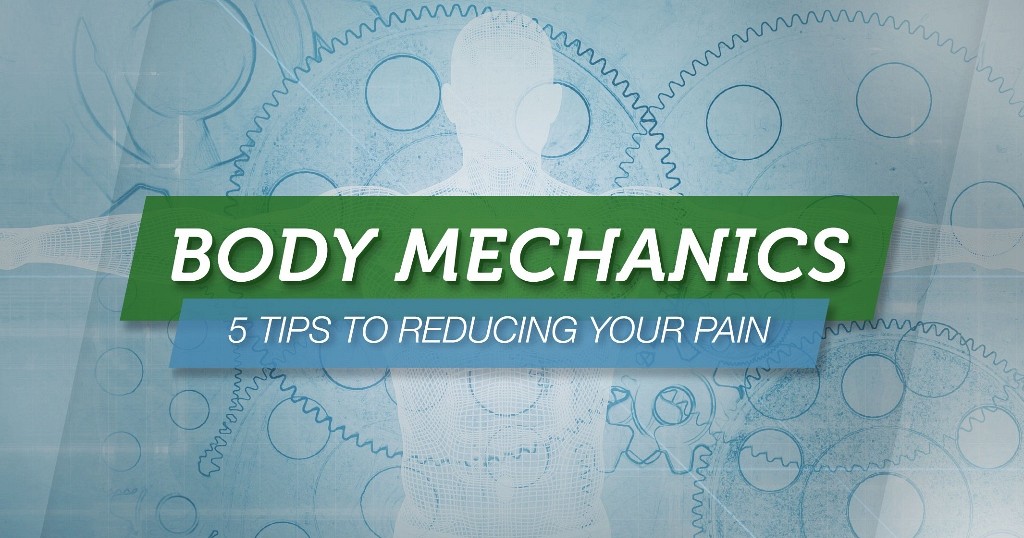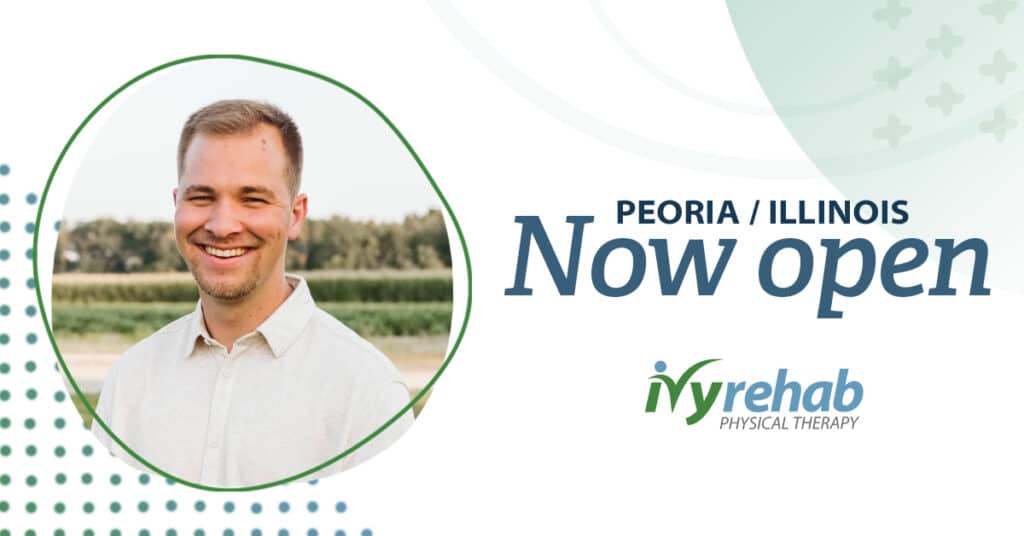It’s likely that you or someone you know has experienced lower back pain. In fact, an estimated 85% of U.S. adults will experience back pain within their lifetime. So, what is activities are leading to all that pain? The major types of lower back pain can be attributed to a combination of obvious factors including cumulative trauma, limited flexibility, and overall deconditioning.
However, the most important—and least talked about—cause of lower back pain is poor body mechanics. In this guide, we’ll cover how to reduce back pain by improving basic body mechanics.
Body Mechanics to Improve Back Pain
Body mechanics is defined as movements and exercises designed to improve posture, coordination, and stamina. People with poor body mechanics move in a way that causes the spine to be subjected to abnormal stresses. Over time, these abnormal stresses can accelerate the cascade of spinal disc degeneration and overall wear and tear. That’s why it’s essential to learn and utilize the principles of proper body mechanics for balance in movement.
Now that you understand how poor body mechanics may cause you to seek out physical therapy for lower back pain, here are 7 strategies you can implement to reduce the pain and improve your body movement.
1. Optimize Your Sleep Position for Back Pain Relief
Your sleep posture plays a crucial role in alleviating back pain. Try sleeping on your back with a small pillow under your knees. This position can help keep your spine aligned, helping to relieve pain in the lower back. This position supports the natural curve of your spine, to help you feel relief during sleep. The following sleep practices can help your overall health and back pain relief:
- Back Sleepers: Lie on your back with a small pillow under your knees to help maintain the natural curve of your spine.
- Side Sleepers: Sleep on your side with your legs slightly bent and a pillow between your knees to keep your spine aligned.
- Avoid Stomach Sleeping: This position can lead to neck and lower spine pain.
- Support: Use a firm mattress or a supportive pillow to enhance sleep quality and further alleviate back pain.
2. Stand Straight
Maintaining proper posture through walking and standing straight can significantly reduce lower back pain. When you adopt an upright stance, your spinal muscles stretch naturally, which not only improves flexibility but also alleviates chronic pain symptoms.
To practice standing straight, try the following:
- Stand with your feet shoulder-width apart
- Create a small hollow in your low back by tucking your tailbone in and tilting your pelvic bone slightly forward. This is done by tightening your buttock muscles and thus rotating the pelvis to a neutral position
- Pull your shoulders back and lift chest forward
- Rest your chin in a leveled neutral position
This alignment helps relieve undue strain on your lumbar region, making your overall movement more efficient and comfortable.
3. Chin Tucks
Chin tucks are a simple, effective exercise that can help treat chronic spine pain and are convenient to perform whether you’re at home or at work.
Here are additional tips for chin tucks:
- In sitting or standing with proper posture, slide your chin backward
- Hold this position for 5 seconds
- Perform 20 repetitions at 2-3 times per day
These movements not only reduce neck strain by relieving pressure on compressed nerves but also help strengthen the muscles that support your neck, leading to improved posture and long-term relief.
4. Shoulder Squeezes
Although it may seem odd, shoulder squeezes can have a positive impact on lower back pain. By engaging and strengthening your upper back muscles, shoulder squeezes help promote proper posture, which in turn stabilizes the spine and reduces the strain on your lower back.
Here are tips for effective shoulder squeezes:
- In sitting or standing with arms at side, squeeze shoulder blades together
- Hold this for 5 seconds and perform 20 repetitions at 2-3 times per day
This effective exercise encourages a balanced distribution of weight and supports overall back strength, contributing to long-term pain relief.
5. Lift/Carry Weight Properly
Incorporating proper techniques into your daily weight-carrying activities can significantly reduce back pain. When lifting something heavy, always remember to:
- Always prepare your mind for the amount of weight you are about to lift
- Keep a stable base of support with your feet placed shoulder-width apart
- Stand as close to object as possible
- Bend and lift from your hips and legs, NOT your back
- As you turn, move your feet to prevent twisting of your trunk
- Keep your abdominal muscles firm without over-arching your back
- Use smooth and controlled movements throughout the lifting process
By consciously lowering the weight you carry and using correct lifting methods, you not only ease the strain on your lower back but also build strength and stability over time.
6. Utilize the McKenzie Method
The McKenzie Method is an evidence-based assessment and treatment process that engages the patient into active involvement. It is used by physical therapists and their patients for neck, back, and extremity problems. It is a logical, step-by-step process that begins with history taking, testing of postures, repeated movements, and sustained positions in order to determine a classification and develop a treatment program that is unique to the patient.
Key components of the McKenzie Method include:
- Assessment: A thorough evaluation, including history-taking, movement testing, and sustained positions, to determine the cause of pain.
- Classification: Identifying specific movement patterns or postures that either improve or worsen symptoms, guiding treatment direction.
- Treatment: Implementing self-managed exercises and postural corrections tailored to the patient’s needs, often reducing reliance on passive treatments.
- Prevention: Teaching patients how to maintain spinal health and avoid future injuries by recognizing and addressing early warning signs.
The McKenzie protocol for low back pain empowers individuals to take an active role in managing their pain, promoting long-term relief and functional improvement.
7. Engage in Regular Exercise
Regular physical activity can help improve flexibility, relieve stress, and strengthen core muscles—key factors in reducing back pain.
- Choose low-impact activities – Walking, swimming, and yoga help improve flexibility while minimizing strain on the spine.
- Strengthen core muscles – A strong core provides better spinal support, reducing the risk of injury and pain.
- Incorporate targeted exercises – Movements such as pelvic tilts, bridge lifts, and child’s pose help stretch and strengthen the lower back.
- Enhance flexibility and joint health – Increased flexibility can alleviate stress on muscles and joints, improving overall mobility.
- Consult a professional – Always check with a medical professional or physical therapist before beginning a new exercise routine. They can recommend exercises and specialized treatment plans tailored to your needs.
Incorporating these effective exercises into your routine can provide essential support to your spine, reducing injury risk and pain.
Take Control of Your Lower Back Pain
While there are many causes of lower back pain, most people are suffering because of poor body balance and alignment. Whether you’re at your desk or on your feet or even asleep, it’s important to continuously maintain your posture, coordination, and stamina. Several physical therapists in the Ivy Rehab family are certified under the McKenzie Method. Based upon the evaluation, the physical therapist will perform an individualized assessment of your lower back pain caused by faulty body mechanics, poor posture, limited flexibility, or weakness of a particular muscle group.
In most states, you can begin physical therapy treatment without a prescription. For states with limited direct access laws, you can still come in for a free consultation with one of our physical therapists without a prescription. Request an appointment today!
Article by: Holly Lookabaugh-Deur, PT, DSc, GCS, CEEAA
Ivy Rehab
Holly is a practicing physical therapist, partner and Director of Clinical Services at Ivy Rehab Network with more than 40 years of experience in sports management with young athletes, and is board certified as a geriatric clinical specialist and certified exercise expert for aging adults. Deuer is certified as an aquatic and oncology rehabilitation specialist and serves as adjunct faculty at Central Michigan University and Grand Valley State University.





